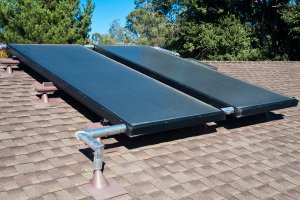Are you interested in harnessing solar energy to power your home? A solar hot water system near Clermont and North Central Florida can prove to be a cost-effective and energy-efficient method of providing your household with hot water. This type of system is fueled by solar power alone and can be used in any climate.

Active Solar Water Heaters
A solar water heating system consists of solar collectors and storage tanks. These heating systems fall into two categories: active and passive. Active systems utilize circulating pumps and controls, and can be either direct or indirect. Direct circulation systems function best in climates that rarely reach freezing temperatures, and their pumps circulate water into the home through the collectors. Indirect circulation systems are a popular choice in colder regions that tend to reach freezing temperatures. These systems heat the water flowing into the home using a non-freezing heat-transfer fluid.
Passive Solar Water Heaters
Often less costly but also less efficient than active systems, passive solar water heaters do not use circulating pumps and rely upon one of two other systems instead. Integral collector-storage passive systems are best suited for areas that do not freeze. The second option, thermosiphon systems, are typically more expensive and reliable. These heaters depend on the rising of hot water to the top of the storage tank so it can be pumped into the home.
Solar Water Heater Collectors
The collector’s role is to absorb the sun’s energy that is to be transferred to the water. The three types of collectors used residentially include flat-plate, integral, and evacuated-tube. Flat-plate collectors are weatherproofed and insulated boxes that use a dark absorber plate. Integral collector systems feature black tubes or tanks within an insulated box. Cold water passes through the collector, is heated, and is then pumped into the backup water heater. Evacuated-tube solar collectors consist of clear, glass tubes which contain a metal absorber tube. Attached to the metal is a fin whose coating absorbs the solar energy to transfer heat to the water.

